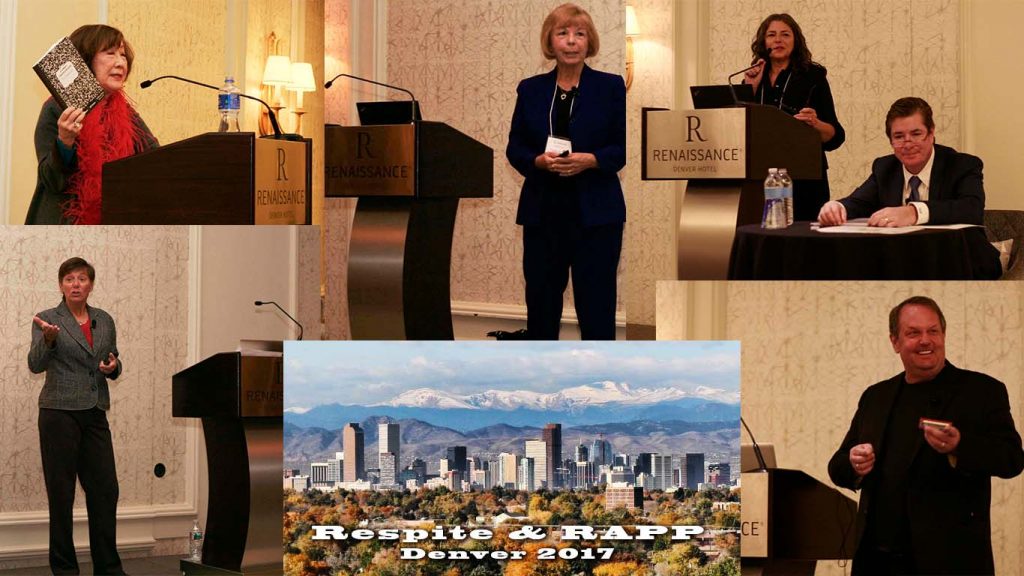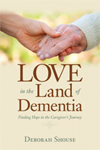Creativity
7 Tips for Reducing Caregiver Isolation
Some years ago, when my mom was diagnosed with dementia, I didn’t know anyone else who was going through this journey. I felt very alone, even though I had a beautiful network of friends. I turned to writing to help me make sense of the situation. Eventually, I gathered the courage to share my personal essays with others, often through simply reading my stories aloud to friends and family. Being able to share my thoughts and feelings on this deeply meaningful dementia experience was so therapeutic, and it inspired me to reach out to other caregivers. Through my years as a family caregiver and through interviewing dozens of caregivers and experts in the field of dementia, I gleaned these 7 tips for reducing caregiver isolation.
Listening
When my friend Karen asked me to tell her more about my mom’s life, I was thrilled. I had been so immersed in my caregiving responsibilities, I had forgotten Mom’s fascinating adventures as a nurse in WWII, her worldwide travels, and more. Simply asking questions about the person who is living with dementia and listening avidly to the stories is a gift to the caregiver.
Visiting
“Your mother is so interesting,” my friend Jane said. Jane had offered to simply come to my house and have a short visit with me and Mom. My mother was going through a period of repetition and I had heard her tale of the natural hot springs in Iceland at least 113 times. But watching Jane lean forward, ask cogent questions, and smile at Mom allowed me to appreciate Mom’s stories in a new way. These were cornerstones in my mother’s life and Jane’s interest reminded me what treasures they were.
Enriching
Mom had been a vibrant movie-goer, an avid opera lover, and an ardent museum enthusiast. But when she could no longer go out, I loved it when people offered to bring arts, culture, and the occasional dog, to us. Studies show that even indirect contact with animals reduces stress. Visits from small dogs and cuddly babies boosted both our spirits and helped us feel connected with our community.
Bringing over an art book and gazing at favorite painters together invited out the creative spirit and were a catalyst for open-ended conversation. Singing and playing music with others stirred up positive memories and filled us with happiness and well-being.
Exercising
So often, caregivers forget the power of fresh air and exercise. They forget the joy of sunshine and trees. When they don’t have the steam to set out on their own, offering to take them on a stroll, a run, to a yoga class, or just to sit on a bench in a park, can offer moments of connection and renewal.
Noticing
“What can I do for you?” my life-partner often asked. Frequently, I was so overwhelmed I had no answer. So he asked me concrete questions. “Do you need any errands run?” “Would you like me to make dinner?” “Are there phone calls I can help you make? Grocery shopping I can do?” Offering to do simple tasks helped me understand I did not have to soldier through this alone. Help was all around me and one of my spiritual journeys was learning how to receive it.
Inviting
It’s not always easy to stay connected with friends who are living with dementia and their caregivers, but it is so worth it. Even when my mother felt lost at social gatherings, she still enjoyed the energy of being around empathetic friends. Even when she didn’t understand every speck of conversation, she relished being around others and meeting new people. So did my father and so did I. Having friends reach out with invitations reminded us we were still part of our community.
Asking
Sometimes we don’t know what to say to our friends who are caregivers for those living with dementia. We don’t know what to do. Then it’s time to simply state the truth and tell them, “I want to be there for you, to understand what you’re going through. I want to support you, and I don’t quite know how to do it. Can you guide me?”
Chances are the answer will be a warm hug and a resounding, “Yes.”

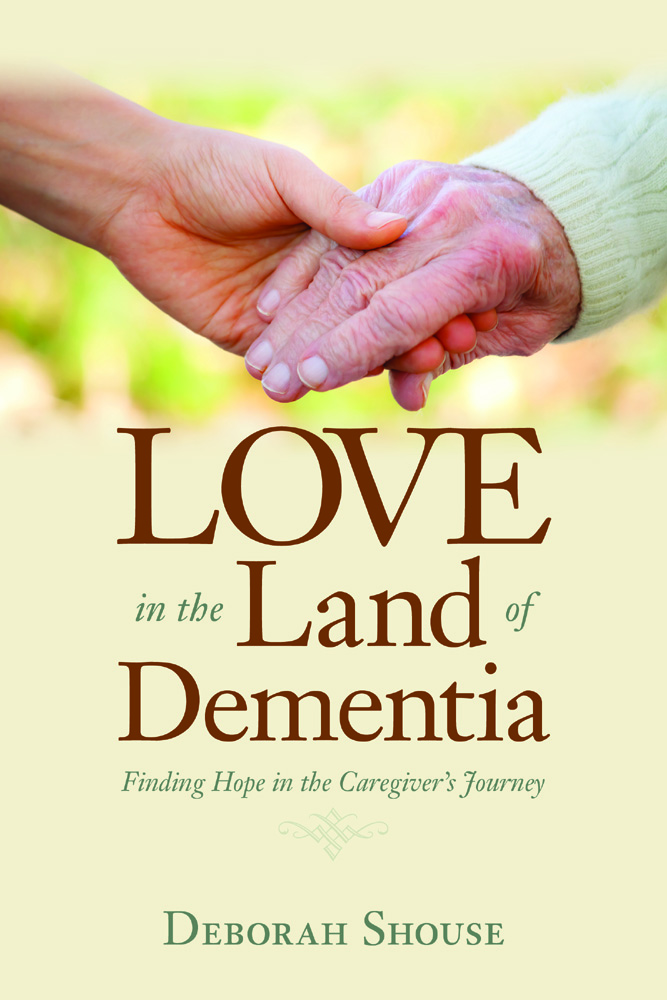
A Thanksgiving Love Story: Bringing Home the Gravy
Thanksgiving changed the year I went vegetarian. I did not mind giving up the tender, moist turkey or the savory oyster-specked stuffing. But giving up the flavorful flow of mushroom-laden gravy was quite another thing. I watched enviously as my family ladled the luscious liquids over their mashed potatoes, turkey and stuffing. As I nibbled dryly on my carrots, green beans and salad, my lower lip protruded. I felt left out and deprived.
My brother, Dan, ever alert to the pouting big sister, came up with a solution.
“Next year I will make special vegetarian gravy just for you,” Dan promised.
Years later, that special vegetarian gravy has become one of my favorite Thanksgiving rituals. I begin fantasizing about it the moment the autumn leaves turn crimson. I know that in mere weeks, my brother and his family will arrive and I will have my yearly boost of family and feasting,
When my brother calls to tell me his travel plans, I write his arrival time and GRAVY on my calendar. The night he comes to town, we make the shopping list together, avidly discussing how many pounds of mushrooms we need for both the carnivore and vegetarian pots of gravy. I relish the early-Wednesday morning trip through the grocery store, where Dan and I and our children carefully select the foods we will be making the next day. We linger in the produce aisle, filling several sacks with gleaming white mushrooms and buying rustling yellow onions.
On Thanksgiving Day, Dan and I and other family members spend long, luxurious hours cooking. Dan mans the stove and I manage the slicing and chopping. Together we snap, peal, slice and dice the vegetables that will accessorize the turkey. I take special pleasure in wiping clean and slicing the mushrooms, then bringing my brother the brimming bowlful. When he has nodded his approval, I get out the old copper pot I bought in Germany in the early seventies. This year, Dan is improving his already amazing gravy. With his new immersion blender, he creates a rich base of caramelized onions, whose flavor surpasses that of the lowly vegetable cube. He adds in a little flour, then gentles the mushrooms into the onion broth. When the pot is bubbling with thickening nectar, he says, “Taste this and see what you think.”
I always think the same thing—“Wow, this is great.”
We are in a state of giddy and satisfied exhaustion by the time our guests arrive. We share grateful prayers with everyone and lay out the feast, including plenty of turkey-based gravy for the rest of the family.
Then comes the moment I have been waiting for: I sit down, my own personal pot of gravy poised by my plate. I cover the mashed potatoes, carrots, green beans, and salad with the aromatic concoction and I savor every bite. But more importantly, I savor the bounty, creativity, and love that have gone into this simple dish. Through this gravy, my brother speaks with his hands and his heart, saying: “I care about you and I am going to make sure you are not left out and that you have something fantastic to eat.”
For that and so much more, I am thankful.
…………
And now, if you’d like to create a Thanksgiving love story, bring home this delicious gravy.
Dan Barnett’s Chicago Style Never-Enough-Mushroom Vegetarian Gravy
Ingredients
2 large onions (chopped)
2 pounds (or more) white button mushrooms sliced (can add some portabellas for enhanced flavor)
1 cup of white wine (of lesser quality)
Salt & pepper to taste
Olive oil
Directions
To create the gravy base:
In a four -quart pot, pour a thin layer of olive oil and turn the burner on medium.
Add the onions and sauté for10-15 minutes until they are caramelized (golden brown)
Add water until the pot is about half full.
Simmer slowly for 30 minutes.
Blend the onion water mixture using either an immersion blender or by transferring the mixture to a food processor.
Once you have the gravy base
Add the 2 pounds (or more) of sliced mushrooms, white wine and fill the pot with water until it is 3/4 full.
Simmer for 30 minutes and season to taste with salt and pepper.
Deborah Shouse is the author of Connecting in the Land of Dementia: Creative Activities to Explore Together and Love in the Land of Dementia: Finding Hope in the Caregiver’s Journey.
Inside Dementia: Finding Gifts in the Journey
“My husband and I have been married for 53 years,” a woman with delicately curled silver hair and mournful eyes told the group. “But in the two years since he was diagnosed with dementia, our relationship has changed.” She dabs at her eyes with a tissue and takes a breath. “It has grown even stronger. We are closer than we’ve ever been.”
Ron and I were in a conference room of caregivers in Ft. Wayne, Indiana, presenting for the Greater Indiana Chapter of the Alzheimer’s Association. We had just shared my story, Love in the Land of Dementia, and we were all talking about the gifts we have found in the dementia journey.
Another woman, whose husband was newly diagnosed, talked about her frustration and impatience before the diagnoses.
“Now that I understand what is going on, I have vowed to be more patient. I don’t want to waste a minute of our time together.”
“My husband doesn’t know who I am right now,” another woman said. “But the other day, he gave me such a compliment. He told me, ‘I want to marry you.’”
She told us how she rummaged in her cedar chest and showed her husband their marriage certificate. He read it with interest. Then he looked at her, eyes shining, and repeated, “I want to marry you.” Those words, so filled with love, lifted her spirits immeasurably. “To think that even now, when he doesn’t remember much of our lives together, he still loves me so much, that means a lot to me.”
She smiled, as we all applauded this amazing love.
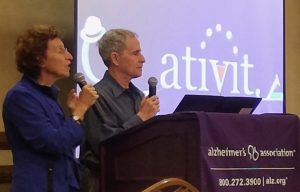 We heard more stories of amazing love at our earlier presentation in Merrillville, Indiana. When we talked about the gifts and blessings we had each discovered in the dementia journey, one woman told us, “I find it an honor to take care of my mother. She has done so much for me and I am lucky to get to care for her right now. I am glad to be able to show my unconditional love for her.”
We heard more stories of amazing love at our earlier presentation in Merrillville, Indiana. When we talked about the gifts and blessings we had each discovered in the dementia journey, one woman told us, “I find it an honor to take care of my mother. She has done so much for me and I am lucky to get to care for her right now. I am glad to be able to show my unconditional love for her.”

People shared many blessings—patience, the increased ability to live in the present, gratitude, flexibility, humor—but a deepening of love was the overarching message. We felt it during our own caregiving journeys, and we felt it deeply in the presence of those caregivers.
“The best and most beautiful things in this world cannot be seen or even heard, but must be felt with the heart.” Helen Keller
To learn more about the work the Greater Indiana Chapter of the Alzheimer’s Association is doing, please visit : https://www.alz.org/indiana/


Everyday Heroes and Nine Great Things We Learned This Weekend
This weekend we were lucky to be around a lot of heroes—the staff and grantees of The Brookdale Foundation Group, which supports national Relatives as Parents Programs, along with Group Respite programs. We loved the sense of commitment and community we felt at this event and we also enjoyed learning from other speakers and the attendees. Here are the nine great things we learned from this weekend’s conference.
I.
Explain
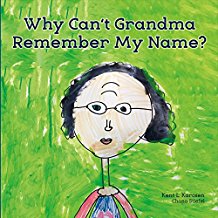 Kent Karosen, President and CEO of the Fisher Center for Alzheimer’s Research, spoke about his new children’s book, Why Can’t Grandma Remember My Name? Written about the way the brain is impacted by dementia and the affects it has on children, the book is illustrated in brilliantly colorful art, created by children, juxtaposed with art by people who are living with dementia. To learn more, www.alzinfo.org
Kent Karosen, President and CEO of the Fisher Center for Alzheimer’s Research, spoke about his new children’s book, Why Can’t Grandma Remember My Name? Written about the way the brain is impacted by dementia and the affects it has on children, the book is illustrated in brilliantly colorful art, created by children, juxtaposed with art by people who are living with dementia. To learn more, www.alzinfo.org
II.
Reframe
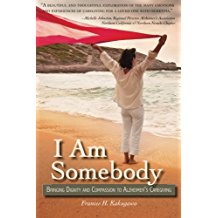 Frances Kakugawa, author of I Am Somebody, spoke of the powerful role poetry played in her caregiving role throughout her mom’s dementia journey. While scrubbing the floor after her mother’s bathroom accident, Frances thought, “There must be another poem here.” She decided to consider herself a poet-caregiver, rather than a struggling-caregiver. Reframing her image and her language helped her transform her attitude. You’ll enjoy visiting www.franceskakugawa.wordpress.com and learning more about Frances, her writing, and her many books.
Frances Kakugawa, author of I Am Somebody, spoke of the powerful role poetry played in her caregiving role throughout her mom’s dementia journey. While scrubbing the floor after her mother’s bathroom accident, Frances thought, “There must be another poem here.” She decided to consider herself a poet-caregiver, rather than a struggling-caregiver. Reframing her image and her language helped her transform her attitude. You’ll enjoy visiting www.franceskakugawa.wordpress.com and learning more about Frances, her writing, and her many books.
III.
Play
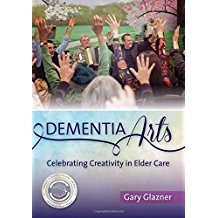 Who knew you could have so much fun with poetry! Gary Glazner, for one, founder of the Alzheimer’s Poetry Project, who lead the whole group in a rousing call and response version of several popular poems. Gary added in music, movements, and stoked up our enthusiasm and our energy. We also created a poem together. You’ll enjoy using his ideas to deepen your communications and your connections. Visit www.alzpoetry.com and treat yourself to his book, Dementia Arts: Celebrating Creativity in Elder Care.
Who knew you could have so much fun with poetry! Gary Glazner, for one, founder of the Alzheimer’s Poetry Project, who lead the whole group in a rousing call and response version of several popular poems. Gary added in music, movements, and stoked up our enthusiasm and our energy. We also created a poem together. You’ll enjoy using his ideas to deepen your communications and your connections. Visit www.alzpoetry.com and treat yourself to his book, Dementia Arts: Celebrating Creativity in Elder Care.
IV.
Support
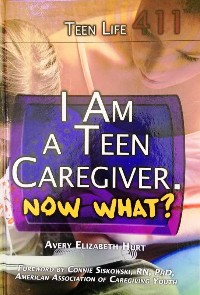 We were shocked and saddened to learn there are more than one million caregiving youth in our country, struggling to stay in school and keep afloat while taking care of ailing family members. Connie Siskowski’s organization, American Association of Caregiving Youth, provides support for these gallant middle schoolers and teens. To learn more about her program, visit www.aacy.org
We were shocked and saddened to learn there are more than one million caregiving youth in our country, struggling to stay in school and keep afloat while taking care of ailing family members. Connie Siskowski’s organization, American Association of Caregiving Youth, provides support for these gallant middle schoolers and teens. To learn more about her program, visit www.aacy.org
V.
Care
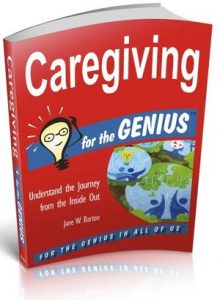 How many of us take enough time to truly care for and nurture ourselves. Jane Barton, speaker, write, and listener, spoke eloquently of compassion fatigue, born of too much caring for others and not enough focus on self. We laughed, cried, and reminded ourselves of the importance of self-care. Learn more from her at www.cardinalife.com and see her book, Caregiving for the GENIUS: Understand the Journey from the Inside Out.
How many of us take enough time to truly care for and nurture ourselves. Jane Barton, speaker, write, and listener, spoke eloquently of compassion fatigue, born of too much caring for others and not enough focus on self. We laughed, cried, and reminded ourselves of the importance of self-care. Learn more from her at www.cardinalife.com and see her book, Caregiving for the GENIUS: Understand the Journey from the Inside Out.
 There were more amazing speakers, but we didn’t get to hear them because we were speaking all day Saturday, sharing two information-packed sessions of Connecting in the Land of Dementia and one session of our beloved The Hero Project. But just because we were teaching doesn’t mean we weren’t learning. Here are just a few of the tips we gathered from our participants.
There were more amazing speakers, but we didn’t get to hear them because we were speaking all day Saturday, sharing two information-packed sessions of Connecting in the Land of Dementia and one session of our beloved The Hero Project. But just because we were teaching doesn’t mean we weren’t learning. Here are just a few of the tips we gathered from our participants.
VI.
Give
As a way of adding meaning and purpose to life, one memory care day group created dog biscuits to donate to their local animal shelter. They stirred up a healthy mixture of organic ingredients, used cookie cutters, and delighted a lot of lonely pooches.
VII.
Collage
Another day care center helped a non-verbal resident create her own collage. One caring person watched carefully as this elder looked through a magazine, pausing at pictures of interest. Then the caregiver tore the photos that had intrigued the woman. Together, they glued them into a collage that the woman enjoys looking at often.
VIII.
Sing
“Song titles inspire singing and conversation,” one participant told us. She shouts out familiar titles and someone in her memory care group usually sings the next couple of verses, with others joining in. This often sparks a conversation about the song.
IX.
Share
The sense of community and generosity during the weekend reminded us again of why we love doing this work and of the importance of sharing things that work, things that don’t, and asking about things we wish we knew. Often, someone else has an answer for us, usually one of those quiet, but powerful, everyday heroes.


Widening the World Through Travel
As the waiter served dessert, Lori La Bey looked around the table at her family and smiled. She couldn’t believe she had pulled this off — her children, her siblings and their children, and her parents all enjoying a Caribbean cruise together. Her mother was living with Alzheimer’s and her father had brain cancer: they had assumed they wouldn’t get to travel again. They were beaming and Lori knew all her planning had been worth it. She was widening the world through travel.
She still treasures the family pictures from this trip. This meaningful travel experience inspired Lori, founder and host of Alzheimer’s Speaks, to orchestrate a cruise for people who are living with dementia and their families.
“Travel is a normal part of life,” Lori says. “When you stop traveling, your world becomes smaller.”
From her years caring for her mom, Lori understands how easy it is to feel isolated and stuck. She also understands the joy of engaging in the world, trying new things, and meeting new people. Her trip enriched her family and she wants to offer others that gift of connection and adventure.
Lori also learned some tips from traveling with her parents. Here are a few ideas for creating a smooth traveling experience for yourself and for someone who is living with dementia:
Create a flexible travel experience. Lori chose cruising because it can be reasonably priced, you can unpack once and stay in the same room the entire trip, and there’s lots of flexibility with eating (including free room service), activities, and touring. Cruising is also ideal for the intergenerational experience, offering activities for all ages.
Make the person living with dementia part of planning the trip. Discuss the trip with all involved, asking for feedback and talking about what each person really wants to do. Incorporate those dreams into the trip.
Empower your travelers. Lori packed all her parents things into one giant suitcase. Her father had always been the one managing the luggage and he really wanted something to carry. “I hadn’t thought to pack a couple of small bags so he and my mom could feel like regular travelers,” Lori says. “People want something to be in charge of so they don’t feel left out.”
Work with a travel agent and make your life easier. Plan in advance for noise, long transfers, layovers, long car rides, and other chaos. If flying, call the airport if you need to arrange for wheelchairs or other inner airport transportation. To mute noises, bring earplugs. Carry along items that soothe and comfort each of us, including favorite music and head phones. If you’re cruising, talk to the cruise lines in advance, discussing special needs, including dietary, medical, and any mobility issues.
Take pictures and videos and document these precious moments. You’ll enjoy looking through these memories again and again together.
“Travel is about being together and widening your world,” Lori says. “It’s a wonderful way to build those moments of magical and meaningful connection.”

For an amazing way to widen your world, consider Lori’s upcoming November Dementia Friendly Conference and Cruise. Lori and a team of educators, including a panel of inspiring people who are living with dementia, have planned a nurturing, connecting, educational, and inspiring Caribbean trip. For more information, visit, https://alzheimersspeaks.com/cruise-with-us
How to Create Better Connections in the Land of Dementia
Ron and I both love helping people create better connections in the land of dementia. We are enjoying the second year of our meaningful Movies and Memories film series. Our next free movie events (and I say “events’ because there is so much more than just sitting and watching a film) are September 10 and November 5. Please tune into Kansas City Live on KSHB-TV on Thursday, September 7 during the 10:00 hour, for additional details.
I was delighted to be featured on Mike Good’s Together in This recent podcast. Mike is a gifted interviewer, with an authentic voice and a true commitment to help people stay better connected. I so enjoyed our time together and wanted to share the interview with you.
Recently, we have been connecting through creating laughing classes for caregivers, elders, people who are living with dementia, and others. We love going around to care communities and laughing with community members, family, and staff. Our next public laughter presentation is at the Landon Center, on October 18 at noon. It’s free and open to the public. If you’re in the Kansas City area, please come laugh with us. It’s great fun!
I was honored to have a book excerpt featured on Maria Shriver’s website. Maria does amazing work and her new book, Color Your Mind, is a visual and information treat, full of inspiring ideas.
I was thrilled when a story of mine was accepted by Chicken Soup’s The Dog Really Did That? The story honors Ron’s mom, Mollie, and her love for a dog named Biscuit. If you have a chance, read my story and so many other great essays in this inspiring book.
Finally, thanks to Mary Anne Clagett of Creative Forecasting, a publication for Activities Professionals. She is featuring a review of Connecting in the Land in their November issue. The publication brims with interesting ideas for creative and meaningful activities.
There are so many ways to Create Better Connections in the Land of Dementia, and as you can see, there is power in sharing stories, laughter, and the arts.
Enrich Life by Adapting Hobbies
We all want to be engaged in purposeful and fun activities. When we enrich life by adapting hobbies, we help people living with dementia stay engaged in activities that are meaningful and interesting to them.
Discover What’s Most Important
To adapt hobbies, ask yourself: What is most important about the activity?
For example, for gardeners, is it the feel of their hands in the soil? Is it producing flowers or harvesting vegetables? Is it having something to take care of?
For those who like quilting, is it the finished product or making the squares? Is it the companionship with other quilters? Or the texture and colors of the fabric?
For those who like cooking, is it the measuring and stirring? Do they enjoy the aromas and textures of the ingredients? Is it the joy of preparing something that thrills others? Or is it the simple pleasure of tasting delicious foods?
With those answers, you can support the aspects of the activity that really resonate. You can enrich life by adapting hobbies.
Here is a story about adapting your attitude.
Embrace the New News
That Tuesday morning, she walked into the kitchen and saw her husband, relaxed in his chair, drinking his morning coffee, and reading the newspaper. He loved his morning ritual and everything was as it always had been. Except now he was holding the newspaper upside down. At first, she was upset, angry that dementia had robbed him of reading. As she battled with her feelings, he hummed, a sign he was happy and content. She took a breath and realized, she too should be happy and content.
Go for the Greens
I love this story from Mara Botoni, author of When Caring Takes Courage. Here’s how she kept her grandfather, who was living with dementia, involved in his golf game. For a time, he walked the golf course and played with empathetic friends. When he could no longer play, he liked being driven around the course, enjoying the scent of freshly mown grass, the vistas of rolling green lawns, and the thwack of a well-hit ball. Later, at home, the family set up an indoor putting green and watched golf tournaments on television with him.
Deborah Shouse is the author of Connecting in the Land of Dementia: Creative Activities to Explore Together and Love in the Land of Dementia: Finding Hope in the Caregiver’s Journey.
A Better Visit in the Land of Dementia
I’m always amazed at how a change of perspective can widen your heart and open your eyes. This is a story of how my friend helped me look at my mom in a new way and gave me me a better visit in the land of dementia.
Many weekday afternoons I stole away from my workday for a little rendezvous. I drove far into the southern part of the city.
There I hurried through the lobby, walked swiftly down the corridors and until I reached the locked door. There I punched in a secret code that allowed me into the inner sanctum, the memory care unit where my mother lived.
Walking into my mother’s room was always a surprise: I never knew who would greet me; a sweet curly-haired woman wearing a pink sweat suit and looking quietly compose? An anxious haggard woman who bent to pick up invisible lint on the floor and jabbered with invisible creatures lurking in the corners? Or an exhausted former beauty, lying across the single bed wearing an orange pullover and an adult diaper? My task was to appreciate every aspect of my complicated mother and whoever she was at the moment.
When my friend Maril asked, “Can I go with you to visit your mother?” I felt like a flutter of angels had gathered around me.
“Really?” I asked. “You want to see Mom with me?”
She did. I prepared her for our visit, describing Mom’s various moods. Maril did not seem shocked, worried or afraid. I told her about walking into the sometimes chaotic energy of the locked Alzheimer’s unit. She simply nodded as if this were an ordinary occurrence, which, for me, it was.
The day of our visit I felt lightness inside; I was eager to share my secret world with my friend.
Throughout the years, Mom has always been gracious with my friends and that day was no exception. Mom was sitting at a table in the dining room with a magazine in front of her. She looked pretty and serene and she smiled when we came in. We sat next to her and Maril took her hands.
“How are you Fran?” Maril said, looking into my mother’s eyes.
“Well I you know the scatter of it all,” my mother answered.
“I do know the scatter of it all. How are you getting along here?”
“Like a diamond in the sky,” my mother said.
As I listened to my mother and my friend talk, I was so moved.
“Your mother is really something,” Maril said as we left the home. “I enjoyed seeing her. I’d like to go again with you sometime.” I was proud of my mother’s poetic and eccentric answers, proud of the way she engaged in the conversation. And I was grateful that my friend was able to appreciate my mother, listen to her words and intuit their deeper meaning.

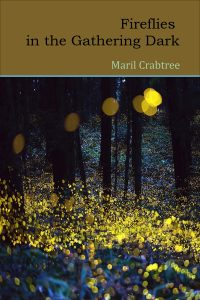 The visit was a huge gift for me. Seeing Maril engage with and appreciate my mom just as she was reminded me of the depths of my mother’s many talents and facets. This knowledge later helped me get through those moments when my mother seemed faraway or lost. My friend reminded me that there are so many ways to carry on a good conversation. All you need is attention, intention and love.
The visit was a huge gift for me. Seeing Maril engage with and appreciate my mom just as she was reminded me of the depths of my mother’s many talents and facets. This knowledge later helped me get through those moments when my mother seemed faraway or lost. My friend reminded me that there are so many ways to carry on a good conversation. All you need is attention, intention and love.
Deborah Shouse is the author of Connecting in the Land of Dementia: Creative Activities to Explore Together and Love in the Land of Dementia: Finding Hope in the Caregiver’s Journey.
Connecting Through Reading Together: Wisdom from Anne Vize
Connecting through reading together has always been part of my life, starting with my mother reading me Mother Goose and Grimm’s Fairy Tales. Even when Mom was living with dementia and could no longer track a Shakespearian play or a complicated novel, she loved holding books and she enjoyed hearing lyrical poetry. I was excited when I discovered the work of Anne Vize, Curriculum and education writer, instructional designer, and author of ‘Reading in the moment – activities and stories to share with adults with dementia’ published by Speechmark.
Anne graciously shared her insights for this blog.
Connecting Through Reading Together: Wisdom from Anne Vize
Why is reading together so important?
Reading is a powerful but sadly often forgotten tool for supporting people who have dementia. Sometimes people worry that they might not read fluently enough, or they might make mistakes when they read, and so avoid doing it all together. But people have been reading together throughout time, and the idea of sharing pose, poetry and stories is an integral part of who we are as people. Just because someone has dementia does not mean they are unable to benefit from the joy of sharing a moment in time, with a great book or piece of text.
How do you get started?
Start small and keep the reading sessions to around 10-15 minutes to begin with. Plan ahead so you know what you are going to read and the sort of ‘voice’ you will use to read it. Some texts are more suited to a bouncy, entertaining voice while others are better suited to a slow, lyrical, smooth reading style. Pick the one that suits the piece you are reading, as well as the one that suits who you are as a reader.
How do you set the scene?
Sometimes a sensory experience to begin with can be useful, or a brief discussion about the personal experiences of the listener that might relate to the story. You can make a link with seasonal activities such as Easter, Christmas, Passover, Independence Day or Anzac Day, but be aware that these festive or commemorative times might trigger particular memories for some people that might be unintended. Be sensitive and make sure you know a little about the piece you have chosen and the person you are reading to.
What kinds of stories/books do you suggest?
Read something you are comfortable with. Avoid texts with long, complex sentence structures or multiple characters, as these can be difficult for the person living with dementia to follow. Focus on stories you can read in a single session, with a limited number of characters, and a plot that only moves in a forwards direction (not something that jumps from one period of time to another, as sometimes happens in the short story genre).
How do you use the stories as conversation catalysts?
You can link what you read with a discussion, activity, or sensory experience, if it seems appropriate. For example, you could read the Australian bush poet Banjo Patterson and then combine this with a sensory experience looking at photos of the Australian bush, exploring plants, and leaves outdoors or listening to the sounds that horses hooves might make on the ground. If you are comfortable wearing a bush hat (called an Akubra in Australia) and a check shirt as you read some bush poetry, all the better!
How do you make the experience meaningful and fun?
Use your judgment and knowledge of the person you are reading to. Think about her needs and personal comfort and monitor how she is faring during your reading session. Think about sensory elements in the room that might interfere with your reading, such as outside noises, distractions outside the window, people moving in and out with meals or drinks, and the like. These can all take away from your reading experience.
Reading has a tendency to create a feeling of peace, calm and harmony for people and can be a trigger for more conversation and interaction. Even if the person does not recall the reading experience after you have finished, they will retain the mood and feeling that the piece has created for them and this may well last for long after the actual reading experience has ended.
To learn more about Anne, please visit, https://www.facebook.com/pg/Anne-Vize-Writing-Services-126820110730385/posts/?ref=page_internal

Reading in the Moment: Activities and Stories to Share with Adults with Dementia
Deborah Shouse is the author of Connecting in the Land of Dementia: Creative Activities to Explore Together and Love in the Land of Dementia: Finding Hope in the Caregiver’s Journey.
The Marvels of Misplacing
“I don’t know where my glasses are,” Mom tells me. I bite my lip; she’s been misplacing things all day. We are supposed to be spending a day drawing and painting, trying to connect mom with the artist she used to be. We are supposed to bake cookies together and look through magazines. But I’ve been spending much of the time crawling around, looking under the sofa and chairs and between the cushions for the disappearing glasses.
“Let’s make our cookies. You won’t need your glasses for that,” I say.
“I need my glasses.”
As I search, I wonder when it became a drudgery instead of a joy to find things. One of my favorite childhood games was Hide ‘N Seek. I loved being the Seeker, loved the surprise of finding someone in a tucked away, mysterious place. I had a special trick I used when I was “It.” I would close my eyes and say, “If I were Dan, where would I hide?” Then an image floated into my mind and I’d race to the hiding place. Half the time, I was right.
Do I still have “it?” I close my eyes and think, “If I were Mom’s glasses, where would I be?” The refrigerator comes to my mind. I rush into the kitchen and fling open the refrigerator door, only to see the usual chaos. But I’m hungry, so I reach for an apple. Behind the fruit is a pair of reading glasses, sprawled across the shelf.
Triumphantly, I take the glasses to Mom.
“These feel nice,” she says.
Not only has my mother reminded me of the importance of creativity, curiosity and play, but she also discovered a great summer time tip: chill your glasses and cool off your face.
Deborah Shouse is the author of Connecting in the Land of Dementia: Creative Activities to Explore Together and Love in the Land of Dementia: Finding Hope in the Caregiver’s Journey.


